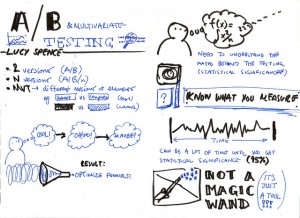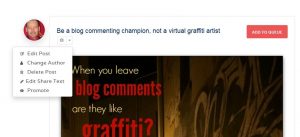Audience Development is a business function like any other; in order to be successful and convert the online public to customers you need to know what your Audience Development funnel actually looks like.
Not knowing their Audience Development funnel is where so many businesses fail – and that’s businesses of all sizes including enterprises who invest millions in developing some of the best content online – but, what good is that content if nobody gets to see it?
Time and time again we see businesses jumping into a content strategy without any planning or strategic thinking and missing out one of the most important pieces of that strategy: Audience Development.
The audience is who will engage with, share, link to and promote a company’s content. But, what often happens is companies spend all the budget developing a great piece of content and forget about how they are actually going to promote this content online. Sometimes this does require using paid content amplification channels and traditional paid ads.
If you don’t have the budget for audience development, then your fantastic piece of content that has just cost you thousands to create is going to sit in your blog and gather dust and will not generate customers.
So, what do the stages in your Audience Development funnel look like?
- Public:This is anyone who sees you are publishing but has not really read the content. Your posts can be found in search engine results, in a blog or in the social platforms like Twitter or LinkedIn. The main thing that will determine whether someone engages with your post or not is the relevancy of the content and the reader’s interest level.
- Viewer:This is anyone who has read your content – they were definitely interested and the content may even be relevant enough for them to share it with others.
- Audience:This is a viewer who finds your content relevant and interesting and wants to see more, so they have followed you or joined your group or forum.
- Prospect:To determine whether someone is a prospect you must pay attention to their comments and engage with them at the right time on the right subject as you identify what information they are looking for and what challenges they face in real-time. Once prospects are identified you can segment them into different lists e.g. via social platforms like Twitter, Hootsuite or marketing automation software like Hubspot and monitor them more closely.
- Customer:It’s always important to stay engaged with your customers – it’s part of the great service you can offer! A further point to note is your customer can also turn into your biggest fan and this means they can also become an advocate for your online content, your business and you, engaging with you regularly and connecting your business with their online network, extending your audience while enabling you to build trust and authority.
- Advocates: yes, this can be your customers, but it can also be journalists, thought-leaders and other well-informed digital natives who know how to network and are therefore invaluable online contacts for your business.
Building and developing an audience is essential -imagine standing on Oxford Street trying to sell enterprise-level software as you get swept along by the busy public each of them with their mind set on performing a specific task, or buying a specific product. How much do you think you are actually going to sell? If you could get inside their minds it would be much easier for you to stop and speak with them or hold up a relevant sign that says “Here is what you’ve been looking for”. Feel free to stand on Oxford Street with a clipboard, if you think it will help.
Alternatively, if your target market are online, then you are in a position where you can monitor their activity; posts; shares, and engage with them according to how and what works for them – it’s a bit like getting inside their minds. In order to do this it is essential to use research to back-up your strategy. This lends credibility to your plan with supporting evidence of what is already working for your target audience online; what’s working for your competitors; what’s working for the relevant media in your target sector.
Business & Finance Articles on Business 2 Community
(364)
Report Post



